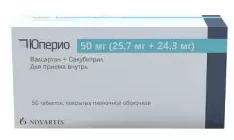Description
Adrenalin Pharmacodynamics
Action is due to activation of receptor-dependent adenylate cyclase on the inner surface of the cell membrane, increased intracellular concentration of cyclic adenosine monophosphate (cAMP) and calcium ions (Ca2+).
At very low doses, at a rate of administration of less than 0.01 µg/kg/min, it may decrease arterial pressure due to the dilation of skeletal muscle vessels. At a rate of administration of 0.04-0.1 µg/kg/min, it increases heart rate and force, blood stroke volume and minute blood volume, reduces total peripheral vascular resistance; above 0.02 µg/kg/min, it narrows blood vessels, increases blood pressure (mainly systolic) and total peripheral vascular resistance. The pressor effect may cause a transient reflex slowing of the heart rate.
Relaxes bronchial smooth muscles, Doses above 0.3 µg/kg/min, decrease renal blood flow, blood supply to internal organs, tone and, motility of the gastrointestinal tract. Dilates the pupils, reduces intraocular fluid production and intraocular pressure. Causes hyperglycemia (increases glycogenolysis, and gluconeogenesis) and increases plasma free fatty acid content.
Increases myocardial conduction, excitability and automatism. Increases myocardial oxygen demand. It inhibits induced by antigens release of histamine and leukotrienes, eliminates spasm of bronchioles, prevents development of edema of their mucous membrane.
By acting on ?-adrenoreceptors located in skin, mucous membranes and internal organs it causes vasoconstriction, decrease in speed of absorption of local anesthetic agents, increases duration and reduces toxic effect of local anesthetic.
Stimulation of b2-adrenoreceptors is accompanied by increased excretion of potassium ions (K+) from the cell and may lead to hypokalemia.
When administered intracavernosal, it reduces the blood filling of the cavernous bodies.
The therapeutic effect develops almost immediately after intravenous injection (duration of action – 1-2 min), 5-10 min after subcutaneous injection (maximum effect – 20 min), when administered intramuscularly – time of the effect is variable.
Indications
Allergic reactions of immediate type (including urticaria, angioedema, anaphylactic shock), developing with the use of drugs, serums, blood transfusions, consumption of food, insect bites or the introduction of other allergens; asthma of physical effort;
– Bronchial asthma (asthmatic status relief), bronchospasm during anesthesia;
– Asystole (including against the background of acutely developed grade III atrioventricular block);
– Bleeding from superficial vessels of the skin and mucous membranes (including gums);
– Arterial hypotension not amenable to adequate volumes of replacement fluids (including shock, bacteremia, open heart surgery, renal failure);
– The need to prolong the effects of local anesthetics;
– Episodes of complete atrioventricular blockade (with the development of syncope (Morgania-Adams-Stokes syndrome));
– Stop bleeding (as a vasoconstrictor).
Contraindications
Hypersensitivity to any drug component, arterial hypertension, evident atherosclerosis (including cerebral atherosclerosis), hypertrophic obstructive cardiomyopathy, tachyarrhythmia, ischemic heart disease, ventricular fibrillation, atrial fibrillation, ventricular arrhythmias, 3-4 degree chronic heart failure, myocardial infarction, pheochromocytoma, thyrotoxicosis, Diabetes mellitus, acute and chronic arterial insufficiency (including in anamnesis – arterial embolism, atherosclerosis, Buerger’s disease, diabetic endarteritis, Raynaud’s disease), hypovolemia, metabolic acidosis, hypercapnia, hypoxia, , pulmonary hypertension, shock of non-allergic genesis (including cardiogenic, traumatic, – hemorrhagic), cold trauma, Parkinson’s disease; organic brain damage, closed-angle glaucoma, seizure syndrome, prostatic hyperplasia, age under 18 years (except for conditions that are immediately life-threatening), pregnancy, lactation, concurrent use of inhalants for general anesthesia (halothane), epinephrine in combination with local anesthetics is not used for local anesthesia of fingers and toes because of the risk of ischemic tissue damage.
For emergency conditions, all contraindications are relative.
Caution:
Hyperthyroidism, advanced age.
Beta-adrenoblockers are prescribed for the prevention of arrhythmias against the background of using the drug.
Dosage and administration method
- Subcutaneously, intramuscularly, intravenously by drop.
Allergic reactions of immediate type (anaphylactic shock): intravenously slowly 0.1-0.25 mg diluted in 10 ml of 0.9% sodium chloride solution; if necessary, intravenous drip infusion at a concentration of 1:10000 is continued. If there is no immediate life-threatening danger, intramuscular or subcutaneous injection of 0.3-0.5 mg is preferable, and repeated administration after 10-20 min up to 3 times, if necessary. - Bronchial asthma: subcutaneously 0.3-0.5 mg, if necessary repeated doses can be given every 20 min up to 3 times, or intravenously 0.1-0.25 mg at a dilution of 1:10000.
In asystole: intracardiacly 0.5 mg (diluted with 10 ml of 0.9 % sodium chloride solution or other solution); during resuscitation measures, 0.5-1 mg (diluted) intravenously every 3-5 min. If the patient is intubated, endotracheal instillation is possible – doses should be 2-2.5 times higher than intravenous doses. - Bleeding is stopped locally in the form of tampons moistened with the drug solution.
For arterial hypotension: intravenously drop 1 mcg/min, the rate of administration may be increased to 2-10 mcg/min. - To prolong the action of local anesthetics: at a concentration of 0.005 mg/ml (the dose depends on the type of anesthetic used), for spinal anesthesia, 0.2-0.4 mg.
Morgania-Adams-Stokes syndrome (bradiaoitmic form) at a dose of 1 mg in 250 ml of 5% glucose solution intravenously, gradually increasing the infusion rate until the minimum adequate heart rate is achieved.
As a vasoconstrictor: intravenously drip 1 mcg/min; infusion rate may be increased to 2-10 mcg/min: - Pediatric use:
Infants (asystole): intravenously, 10-30 mcg/kg every 3-5 min, slowly.
Children: over 1 month of age: intravenously, 10 mcg/kg (thereafter, if necessary, 100 mcg/kg every 3-5 minutes (after at least 2 standard doses have been given, higher doses of 200 mcg/kg can be used every 5 minutes). Endotracheal administration may be used.
In children in cases of anaphylactic shock: subcutaneously or intramuscularly 0.01 mg/kg (max 0.3 mg), if necessary these doses are repeated every 15 min (up to 3 times).
In children with bronchospasm: subcutaneously 10 µg/kg (maximum – up to 0.3 mg), the dose is repeated every 15 min if necessary (up to 3-4 times) or every 4 hours.

![Epinephrine (Adrenaline hydrochloride) injections 1 mg/ml - [5 ampoules]](https://mediscom.com.co/wp-content/uploads/2022/11/Adrenalin-1ml-5.webp)
![Moxonidine (Physiotens) 0.4 mg - [14 tablets]](https://mediscom.com.co/wp-content/uploads/2025/06/Physiotensis-04mg-14.webp)
![Rosuvastatin (Roxera) 10 mg - [30 tablets]](https://mediscom.com.co/wp-content/uploads/2025/06/Roxera-10mg-30.webp)

![Torasemide 5 mg - [60 tablets]](https://mediscom.com.co/wp-content/uploads/2025/06/Torasemide-5mg-60-200x200.webp)